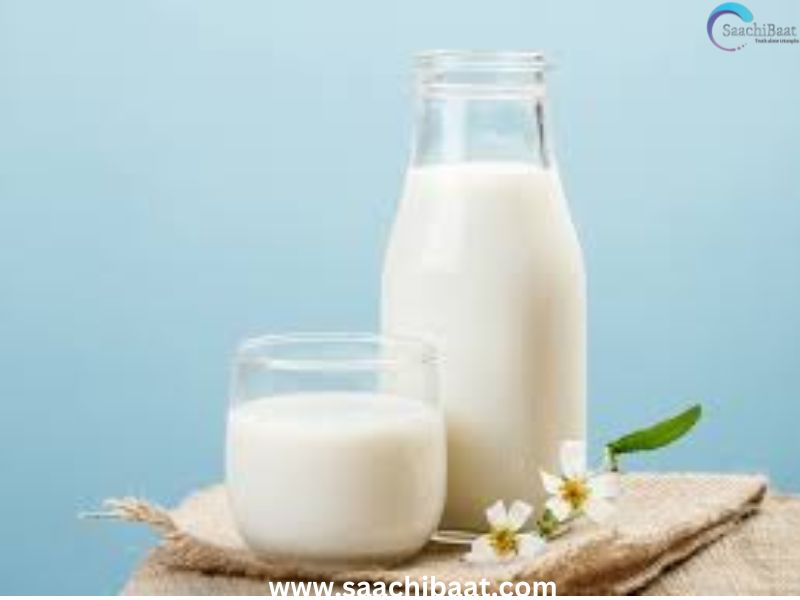I often find myself overwhelmed when making choices. At the same time, I recognise how empowering it is to have options—it enables us to take control of our decisions. With an ever-expanding market (now that we are no longer a strictly socialist country) and the wide variety of food products available, my work in dietetics has become significantly easier. When I began my professional journey more than three decades ago, finding safe gluten-free bread or cookies for Celiac patients was nearly impossible. Today, we are spoiled for choice, but this abundance also brings with it confusion and chaos.
The recent FSSAI directive regarding the marketing and sale of A1 and A2 cow milk, followed by its sudden revocation, highlights the confusion even among authorities. Hence, I want to share my thoughts on this ongoing A1 versus A2 milk controversy.
Having a wide range of milk options—cow, buffalo, low-fat, skimmed, various plant-based milks, and A2 milk—is surely a great thing. However, it’s up to professionals like dietitians to guide individuals across age groups on what is best for them. For example, while vegan milk (plant-based milk) is often praised for its health benefits, it is not recommended for growing children. In this era of personalised nutrition, it is the domain of dietetic professionals to prescribe specific foods for specific needs and concerns.
For now, let’s take a look at what we know about A2 milk.
–
What’s special about A2 milk?
For a small segment of the population sensitive to A1 beta-casein, consuming A1 milk can lead to digestive issues like gas and bloating. For these individuals, switching to A2 milk can help alleviate symptoms and improve tolerance. Before A2 milk was available in the market (prior to 2000), I recommended other strategies to manage these issues. Today, A2 milk offers another option for those facing gut-related problems such as motility issues and flatulence. Having said that, it’s important to rule out other causes of poor digestion and milk intolerance, as A1 protein maldigestion is not always the sole culprit.
What we know so far: The scientific evidence
The majority of milk protein (80%) is casein, while the remaining 20% is whey protein. The casein protein structure includes beta-casein, which is found in both A1 and A2 milk. The difference lies in the 67th amino acid in the chain of 209 amino acids—A1 milk has Histidine at this position, while A2 milk has Proline.
Some studies have suggested that the Histidine in A1 milk breaks down into BCM-7 (Beta-casomorphin-7), a compound belonging to the opiate family. This protein fragment has been implicated in conditions such as diabetes, autism, cardiovascular disease (CVD), schizophrenia, and autoimmune problems. However, these effects have only been observed in some animal studies and have not been conclusively proven in humans. In 2009, the European Food Safety Authority stated that there is no conclusive cause-and-effect relationship between BCM-7 and the aforementioned disorders in humans.
Are the claims about A2 milk valid?
A2 milk companies have claimed various benefits, including a reduced risk of type 1 diabetes, cardiovascular diseases, autism, allergies, and autoimmune diseases. However, these claims are not supported by strong scientific evidence. Additionally, the advertising of A2 milk as having a superior nutritional profile (e.g., higher mineral content of calcium) is not accurate. The claims have certainly been exaggerated, and social media has played a significant role in inflating its perceived benefits.
There is also concern that testing to differentiate between A1 and A2 milk requires specialised kits that are not easily accessible. Moreover, milk from different cow breeds is often mixed, raising questions in scientific circles about whether this testing is actually being conducted.
A1 vs. A2: Where do we stand?
Checks and balances are essential in every aspect of our lives, and the FSSAI can play a crucial role in ensuring that different types of milk are available to us in safe formats. Concerns about antibiotics, hormones, additives, and excessive preservatives in milk remain top priorities in our country. While raw, fresh, unpasteurized milk is often considered healthy, it can carry pathogens like Salmonella, E. coli, and Listeria. More action is needed to ensure that safe and affordable milk is accessible to everyone.
Offering a choice and a diverse range of safe, certified foods is not something to frown upon, nor is it risky to consume A2 cow milk if it is certified, safe and affordable. However, there is certainly hype surrounding A2 cow milk and its perceived health benefits, largely driven by aggressive marketing on social media. Regulation should focus on curbing false and misleading claims and educating consumers. The claim that A2 cow ghee is superior to A1 cow ghee is entirely baseless—ghee, being the fat extracted from milk, contains no protein, so any superiority claim based on protein content is without merit.
 |
Ms. Neelanjana Singh, Nutrition Consultant & Author |


